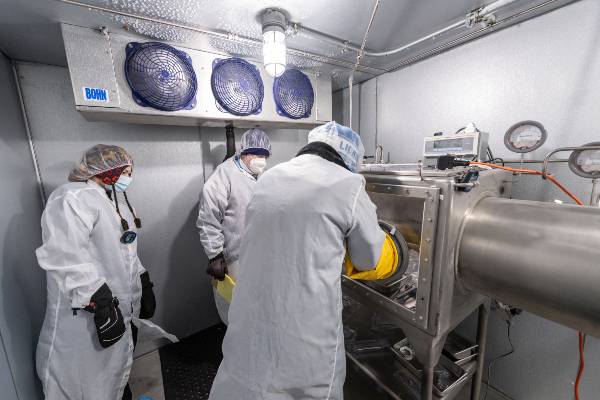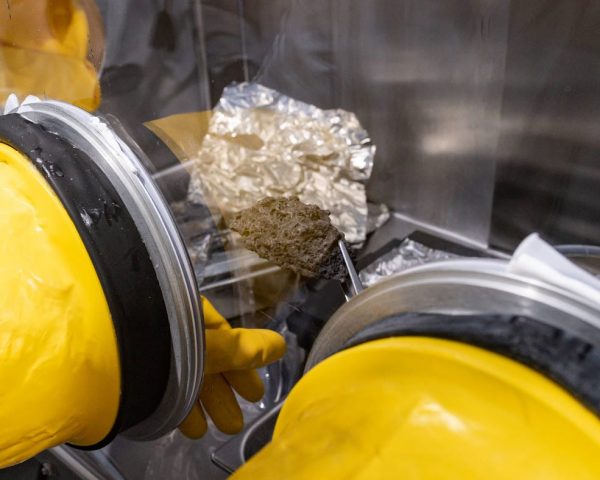In 1971 and 1972, when the Apollo 15 and 17 missions returned to Earth with parts of the Moon, some of the samples were kept aside for future research.
After a half-century, these samples are finally being investigated.
What Is Research About?
In 2019, 9 teams of researchers were chosen to investigate the unaltered rocks and soil brought back by the Apollo missions, shortly after a forthcoming Artemis mission to the Moon was announced.
On Earth, some of the vacuum-sealed samples have never been opened. Since their arrival fifty years ago, others have been meticulously stored in a freezer.
Years of planning have gone into transporting the valuable cargo from Texas to NASA laboratories around the country.
To house the lunar samples, a separate facility had to be erected at the Goddard Space Flight Center in Maryland, which took four years to complete.
Read: Moon May Have Been Secretly ‘Stealing’ Earth’s Water For Billion Of Years
Why Did It Take So Long For The Scientists To Examine The Samples?
Only now can experts begin to examine the Apollo missions’ long-hidden treasures in preparation for the Artemis missions.
“It always blows my mind when you think about how these samples came from another world, how far they’ve traveled, and the Solar System history they’ve kept inside them,” says planetary scientist Natalie Curran, who is examining the lunar samples at Goddard.
Why do The Samples Have To Be Kept Under Extreme Temperatures?
Curran is studying lunar parts that were frozen when they arrived on Earth in 1972 and must be stored under strict circumstances.
To handle the precious samples, researchers must enter a freezer maintained at minus 20 degrees Celsius (4 degrees Fahrenheit) and put their hands in a nitrogen-purified glove box. You can touch the moon rock only when your hands are covered with thick rubber gloves.
“Everything we do involves a lot of logistics and infrastructure, but adding the cold makes it a lot more difficult,” says Ryan Zeigler, a researcher for astronomical materials who helped oversee the processing methods in the lab.
“This is an important lesson for Artemis. Being able to handle samples in the cold will be much more important to the Artemis mission than Apollo. This work gives us some lessons and good information about Artemis. .”
Curran is a lead researcher at Goddard’s Mid-Atlantic Noble Gas Research Laboratory looking at lunar samples as time capsules.
Why Is This Research Important?

Using inert gas, the team is trying to measure how long a mass on the moon’s surface has been exposed to cosmic rays.
This knowledge can help us understand how the state of the moon has changed over time.
“Cosmic rays can damage organic matter that may be in the sample, so understanding the duration helps to determine the effect on the organic matter,” Curran explains.
Other Researches Conducted By The Scientists
Another team of researchers at the Goddard Astrobiological Analytical Laboratory is studying whether and how many volatile organic compounds are in lunar samples.
Early research in the 1970s suggests that certain lunar rocks contain amino acids that are essential for life on Earth. But since then, our understanding of technology and astrobiology has improved significantly.
“We suspect that some amino acids in the lunar soil may have formed from precursor molecules, which are smaller, more volatile compounds such as formaldehyde or hydrogen cyanide,” explains Jamie Elsila, a researcher at the Astrobiology Analytical Laboratory.
“The goal of our research is to identify and quantify these small organic volatile compounds and all amino acids and use the data to understand the prebiotic organic chemistry of the moon.”
Conclusion
NASA researchers will also compare differences between frozen and non-frozen samples of the moon to determine which preservation methods perform better in the long run. The results obtained will eventually become the basis for further processing of lunar samples that will be delivered using the Artemis mission.
Some samples will be reserved for future use. It’s time for improved technology to help you see things you couldn’t see before.
“It’s good to think about all the work that went into collecting the samples from the moon, and all the prior thought and attention that went into preserving the samples for analysis now,” says Elsila.
